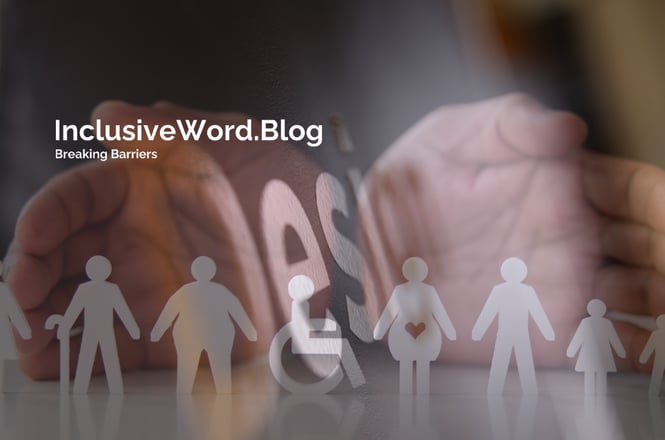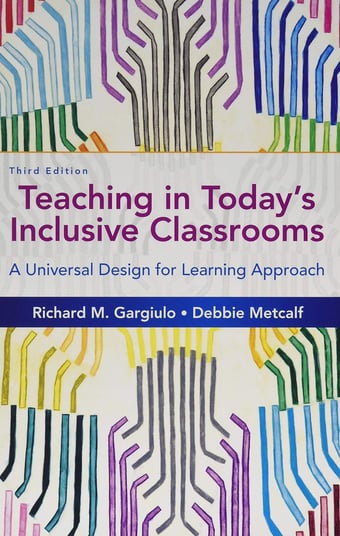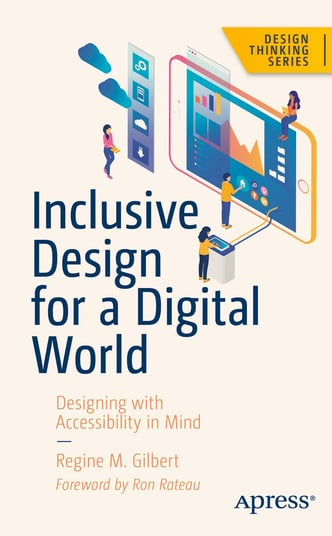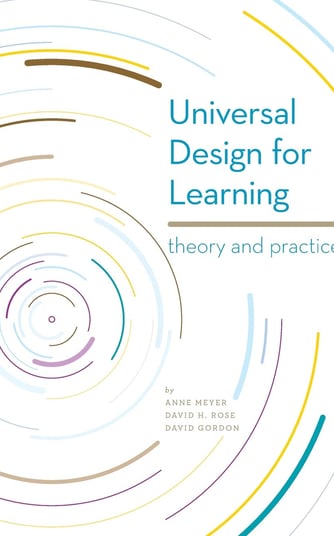Inclusive Design: A Tool for Empowering People
Inclusive design ensures that products and environments are accessible to everyone, including people with disabilities. By considering the needs of diverse users, inclusive design promotes equity and empowers individuals. This blog will delve into the principles of inclusive design and its impact on people with disabilities, their families, and communities
INCLUSIVE DESIGN
Inclusive design is not just a buzzword; it's a transformative approach that aims to create products, services, and environments accessible to as many people as possible. This strategy is crucial for interdisciplinary professionals working with individuals with disabilities, as it fosters independence, participation, and overall well-being. By understanding and implementing inclusive design principles, professionals can make significant strides toward a more inclusive world where everyone has the opportunity to thrive.
What are Examples of Inclusive Designs?
Inclusive design is about innovation and practicality, ensuring that everyone can access and use products and services effectively. Here are some notable examples:
Curb Cuts: Originally designed for wheelchair users, curb cuts have become a ubiquitous feature in urban environments. They benefit not only those in wheelchairs but also parents with strollers, cyclists, and travelers with luggage.
Accessible Websites: Websites designed with inclusive principles include features such as screen reader compatibility, alternative text for images, and keyboard navigation. These features ensure that individuals with visual impairments or motor disabilities can access digital content.
Closed Captioning: Subtitles or closed captions are essential for individuals with hearing impairments. They also benefit people in noisy environments or those who speak different languages.
Universal Remote Controls: These devices have large buttons and simplified interfaces, making them accessible to people with vision impairments or limited dexterity.
Public Transport Announcements: Visual and auditory announcements in public transport systems cater to both hearing and visually impaired passengers, ensuring everyone can navigate transportation networks efficiently.
Adjustable Workstations: Desks and workstations that can be adjusted for height accommodate both standing and seated workers, promoting inclusivity in the workplace.
Inclusive Playgrounds: These playgrounds feature equipment accessible to children with various disabilities, such as wheelchair-accessible swings and sensory play areas.
Inclusive design is guided by three key principles:
Recognize Diversity and Uniqueness: This principle acknowledges that individuals have unique needs and preferences. Inclusive design seeks to understand and value these differences to create solutions that cater to a wide range of users.
Create Solutions for All: Instead of designing for the average user, inclusive design aims to develop products and services usable by the maximum number of people, regardless of their abilities or disabilities.
Inclusive Process and Tools: This principle emphasizes involving diverse users in the design process. It ensures that the tools and methods used support creating inclusive solutions.
Universal Design vs. Inclusive Design
While both universal design and inclusive design aim to create accessible and usable products for a broad range of people, they have distinct focuses:
Universal Design: This approach seeks to design products and environments that are inherently accessible to everyone without the need for adaptation or specialized design. It often focuses on creating a single solution that works for all.
Inclusive Design: Inclusive design recognizes that one-size-fits-all solutions may not always be possible. It involves designing various solutions to meet the diverse needs of users, including flexibility and adaptability.
Practicing Inclusive Design involves several steps:
Engage with Diverse Users: Involve people with different abilities, backgrounds, and perspectives in the design process through user interviews, focus groups, and usability testing.
Understand User Needs: Conduct thorough research to understand the needs and challenges faced by diverse users through surveys, observations, and ethnographic studies.
Iterate and Test: Develop prototypes and conduct iterative testing with real users to gather feedback and refine the designs.
Implement Flexibility: Design products that can be easily adapted or customized to meet the needs of different users.
Educate and Train: Ensure that all members of the design team are aware of inclusive design principles and best practices. Provide training and resources to support their understanding and application.
An inclusive style refers to design and communication approaches that are accessible and considerate of diverse audiences. This includes:
Clear and Simple Language: Using straightforward language that can be easily understood by people with different reading levels and language backgrounds.
Consistent Layouts: Designing layouts that are predictable and easy to navigate, which helps users with cognitive impairments or unfamiliarity with technology.
Visual and Auditory Cues: Providing information through multiple sensory channels to accommodate users with different sensory abilities.
Responsive Design: Creating designs that adapt to different devices and screen sizes, ensuring accessibility on mobile phones, tablets, and desktop computers.
An inclusive design strategy outlines the approach and steps an organization takes to ensure its products and services are accessible to a diverse range of users. Key components of an inclusive design strategy include:
Commitment to Inclusion: Establishing a clear commitment to inclusive design at all levels of the organization.
User-Centered Design: Prioritizing the needs and experiences of users, particularly those with disabilities, throughout the design process.
Cross-Functional Collaboration: Encouraging collaboration between different departments, such as design, engineering, marketing, and customer support, to ensure inclusivity is considered in all aspects of product development.
Continuous Improvement: Regularly reviewing and updating design practices based on user feedback and advancements in accessibility standards and technologies.
Examples of Inclusive Designs
An inclusive example is any design, product, or environment that effectively accommodates the needs of a diverse range of users. For instance:
Microsoft's Xbox Adaptive Controller: This gaming controller was designed specifically for gamers with limited mobility. It features large programmable buttons and can be customized with various assistive devices, making gaming more accessible for people with disabilities.
Something is considered inclusive if it:
Addresses Diverse Needs: Meets the needs of people with a wide range of abilities, disabilities, and backgrounds.
Ensures Accessibility: Is accessible to everyone, regardless of physical, cognitive, or sensory abilities.
Promotes Participation: Encourages and facilitates active participation and engagement from all users.
Provides Flexibility: Offers options and customization to cater to individual preferences and requirements.
The inclusive approach involves designing with the understanding that users have diverse needs and abilities. This approach focuses on:
User Involvement: Engaging users in the design process to gather insights and feedback.
Diverse Perspectives: Considering the perspectives and experiences of people from different backgrounds and with different abilities.
Flexible Solutions: Creating adaptable solutions that can be tailored to meet the needs of individual users.
Inclusive principles are guidelines that support the creation of accessible and usable designs for everyone. Key inclusive principles include:
Equitable Use: Designs should be useful and marketable to people with diverse abilities.
Flexibility in Use: Designs should accommodate a wide range of individual preferences and abilities.
Simple and Intuitive Use: Designs should be easy to understand and use, regardless of the user's experience, knowledge, or language skills.
Perceptible Information: Designs should communicate necessary information effectively to users, regardless of their sensory abilities.
Tolerance for Error: Designs should minimize hazards and the adverse consequences of accidental or unintended actions.
Low Physical Effort: Designs should be used efficiently and comfortably with minimal fatigue.
Size and Space for Approach and Use: Designs should provide appropriate size and space for approach, reach, manipulation, and use, regardless of the user's body size, posture, or mobility.
The three dimensions of inclusive design are:
Physical Dimension: Ensures accessibility for people with physical disabilities. This includes designing products and environments that accommodate different physical abilities, such as wheelchair accessibility and ergonomic considerations.
Cognitive Dimension: Addresses the needs of people with cognitive disabilities. This involves creating designs that are easy to understand, intuitive to use, and supportive of different learning and processing abilities.
Social Dimension: Focuses on promoting social inclusion and participation. This includes designing environments and products that encourage interaction and engagement among diverse groups of people.
An inclusive concept is an idea or approach that incorporates the principles of inclusive design. It aims to create solutions that are accessible and usable by everyone, regardless of their abilities or disabilities. Examples of inclusive concepts include:
Universal Design for Learning (UDL): An educational framework that accommodates the diverse needs of all students by providing flexible teaching methods, materials, and assessments.
Inclusive Urban Planning: Designing cities and public spaces that are accessible and welcoming to people of all abilities, promoting social inclusion and equal opportunities for participation.
The two types of inclusive are:
Inclusive Design: This approach focuses on designing products, services, and environments that are accessible and usable by as many people as possible. It involves creating flexible solutions that can be adapted to meet the needs of diverse users.
Inclusive Practices: These are actions and policies that promote accessibility, diversity, and inclusion. Examples include workplace accommodations for employees with disabilities, inclusive hiring practices, and community programs that support the participation of marginalized groups.
Conclusion
Inclusive design is more than just a set of guidelines; it is a mindset that prioritizes the needs and experiences of all individuals. By adopting inclusive design principles, interdisciplinary professionals in the disability sector can create products, services, and environments that empower people with disabilities and enhance their quality of life. Whether it's through adaptive technology, accessible public spaces, or inclusive policies, the goal is to ensure that everyone, regardless of their abilities
References
Allen M. (2019). Harvard University Graduate School of Design. Disability Justice: On the need to take a variety of human bodies into account.








